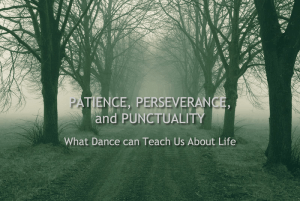 I’d love to take a poll to learn why parents enroll their children in dance. My parents did it because my friend who lived next door took tap and ballet and taught me everything she knew. She adored her teacher, and since I simply couldn’t get enough out of my friend (and because I knew I wouldn’t get real tap shoes unless I took a real class—I used patent leather shoes as a substitute), my parents were subjected to my begging until they relented.
I’d love to take a poll to learn why parents enroll their children in dance. My parents did it because my friend who lived next door took tap and ballet and taught me everything she knew. She adored her teacher, and since I simply couldn’t get enough out of my friend (and because I knew I wouldn’t get real tap shoes unless I took a real class—I used patent leather shoes as a substitute), my parents were subjected to my begging until they relented.
For those parents who aren’t sure their money couldn’t be better spent elsewhere, I’m writing this series of posts about what dance can teach about life. The first in the series was awareness and poise. Today I’m going to tackle what I call the P trio: patience, perseverance, and punctuality. They intermingle a lot, so it seems appropriate to put them together.
Patience comes first. Anyone who takes ballet can attest to the fact that double pirouettes and going en pointe do not happen overnight. So, first of all, as a student you learn that you must be patient with the process. This means that you take classes that your teacher recommends and you know that when you’re ready to move to the next level he/she will move you up. Within the process, you must also be patient with your own development, with your ability to pick up combinations quickly, and with any physical barriers that might not play in your favor. Being patient with the process as a whole and with yourself as you struggle through the personal process of becoming a dancer are vital to steady progress.
And so it is in life, no? We all know patience is a virtue, and most of us are fairly capable of being patient with others, but how many of us are patient with ourselves? From dance I learned that it’s okay to be confused the first time you’re introduced to something. It’s a good idea to watch others who do it better and figure out what they’re doing differently too. The best thing dance has taught me about patience is that I don’t expect to be a whiz the first time I try anything new. I know I just have to keep applying myself and that over time I may (or may not) become a whiz at it.
Perseverance is an important trait in a dancer. Remember the old adage, “If at first you don’t succeed, try, try again”? Well, it’s undeniably true! Not only is perseverance important, in a dancer it is pretty much imperative. I remember feeling such satisfaction when I could finally watch and learn a combination well enough to stand in front at the barre. For years I had to stand between people so that I had someone to follow when I forgot what came next! Okay, so then I eventually felt confident to stand in front or go in the first group in the center as well. But THEN came pas de deux (or partnering) class… Now we can really talk about patience and perseverance! When you begin working with someone else these two qualities are essential.
What’s exciting about learning perseverance from dance training is that the whole process, as with patience, relies on diligence. For example, a dancer takes class daily. It doesn’t matter how good you become; you still have to take class every day if you’re to maintain the strength and technique you’ve achieved (and you can always improve). It continues after class and into rehearsal as well. How many times do we repeat pieces of choreography before we’re ready to perform it onstage? You really don’t have a choice in the matter—“do it again” is a common refrain in rehearsals. Even if you did everything right, you have to work with everyone else in the piece which means exactly where you’re standing at any given moment has to line up with where everyone else is standing. Keeping lines straight, staying equidistant, synchronizing your arms and where to focus your eyes…getting all of these things right means doing it over and over again. And then when you move from the studio to the stage you must block everything again to make it work on stage.
For me, dancing gave me the gift of perseverance that I’ve applied to my life in numerous ways. I don’t expect things to be perfect without a lot of fine tuning. I don’t give up halfway through a project I’ve begun. Sticking with something to completion is huge, and I owe my ability to finish what I start to the training I received in ballet.
Punctuality is last, but not least. Knowing you should be punctual and actually being punctual are two separate beasts. Punctuality isn’t about your good intentions. You are either on time, or you’re late. When I had to rely on a parent to drive me to ballet classes in another city I was often late. It wasn’t my fault! But it didn’t matter, because late is late. I dreaded walking into class after it had started because many teachers wouldn’t allow you to just pick up where everyone else was. If you missed plies then you had to do them on your own and catch up as quickly as you could, and that is if your teacher allowed you to do this. Sometimes you can be so late to class that catching up isn’t even possible, so you have to sit out and watch.
You can bet that whenever I have to be somewhere now, I am very VERY rarely late. Early is best, but on time will do. When you go to ballet class on a daily basis you quickly learn that being late has consequences you’d rather not deal with, and so you get into the habit of giving yourself more than enough time to get there. Personally, I think punctuality should be a virtue. When we’re late for appointments we are stealing the time of whoever is there waiting on us. Tardiness (to me, at least) is inconsiderate. So as someone once said, “Better late than never, but better never late!”
And so it is that patience, perseverance, and punctuality are wonderful characteristics bestowed upon those who dance. Each one is a necessity, and each one can easily be applied to any area of life as well. What I’m trying to say here is that so many life lessons are learned in dance training that it doesn’t matter if you end up dancing for a livelihood. Those hours spent in the studio are not for naught if you end up in law school, nursing, banking, or home-making. So many valuable lessons have been learned and so many respectable character traits have been developed during that time, making whatever you set out to do in life more easily attained.
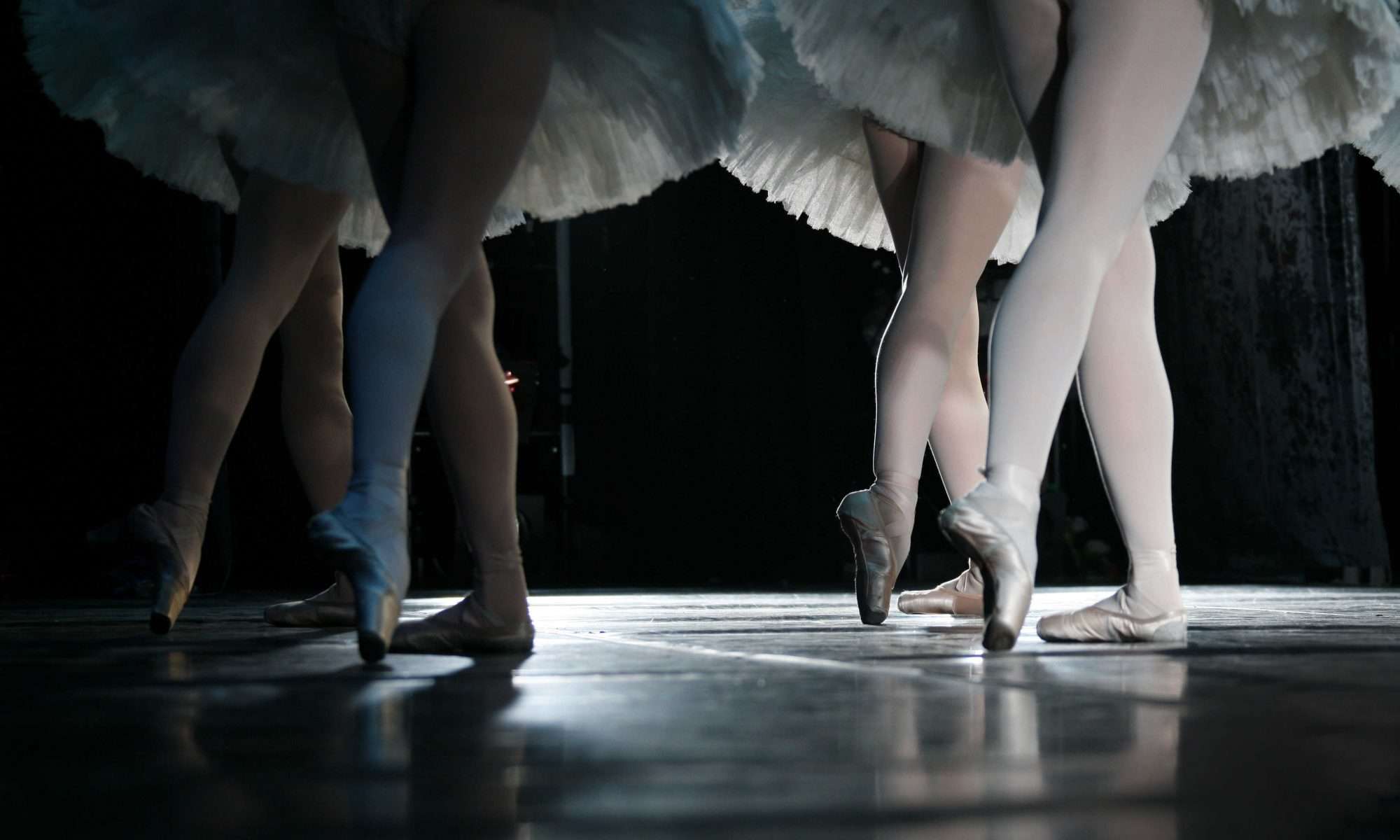


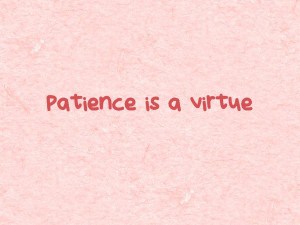
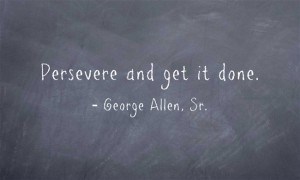
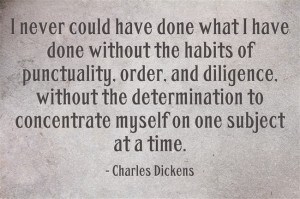

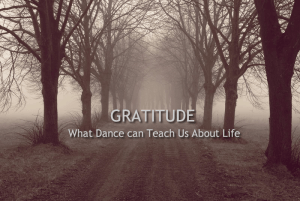 As we approach Thanksgiving I am moved to recall past events or routine encounters in my daily life that make me grateful I’m a dancer. I’m sure that dancers everywhere appreciate the values that dance, and especially ballet, instill into them. I’m grateful that dance taught me to keep trying until I figure something out, to be on time (if not early) to any appointments, to be patient with myself and others, to notice the beauty of things all around us, to recognize classical compositions and composers, and to keep myself healthy and strong — to name but a few!
As we approach Thanksgiving I am moved to recall past events or routine encounters in my daily life that make me grateful I’m a dancer. I’m sure that dancers everywhere appreciate the values that dance, and especially ballet, instill into them. I’m grateful that dance taught me to keep trying until I figure something out, to be on time (if not early) to any appointments, to be patient with myself and others, to notice the beauty of things all around us, to recognize classical compositions and composers, and to keep myself healthy and strong — to name but a few!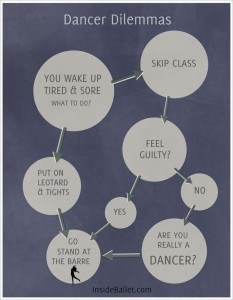

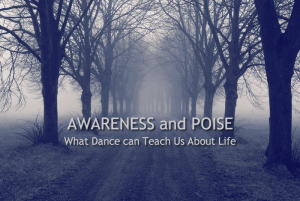 The list goes on and on of course, but this cause and effect gives us greater awareness about our own bodies and minds. I believe that knowing our limits (and that we do have them), being sensible about warming up, and eating a healthy diet among other things teaches us that this one body—the only one we will ever have—must be cared for if we want it to last.
The list goes on and on of course, but this cause and effect gives us greater awareness about our own bodies and minds. I believe that knowing our limits (and that we do have them), being sensible about warming up, and eating a healthy diet among other things teaches us that this one body—the only one we will ever have—must be cared for if we want it to last.


 Joey Dippel is a NYC-based dance teacher and choreographer, Dance Coach at Polish Your Passion, and a professional performer. He holds a B.F.A. in Musical Theatre from the University of Cincinnati’s College-Conservatory of Music, where he received the Lehman Engel Award for Achievement in Musical Theatre Dance. He has performed regionally with the Bucks Country Playhouse, the John W. Engeman Theater in Northport, Pioneer Theatre Company, Weston Playhouse, the Lincoln Theater in Napa Valley, and Marquee San Jose. He has assisted and danced for Otis Salid, Patti Wilcox, Lorin Latarro, Jeffry Denman, and Jacob Brent. As an independent choreographer, he has worked for the Broadway Dreams Foundation, CCM, the Musical Theatre Factory, the Kurt Weill Foundation, and Penguin Rep. He teaches and choreographs for the Children’s Musical Theatre of San Jose, Staten Island Academy, and his own donation-based dance class series called “Combo & a Cocktail.”
Joey Dippel is a NYC-based dance teacher and choreographer, Dance Coach at Polish Your Passion, and a professional performer. He holds a B.F.A. in Musical Theatre from the University of Cincinnati’s College-Conservatory of Music, where he received the Lehman Engel Award for Achievement in Musical Theatre Dance. He has performed regionally with the Bucks Country Playhouse, the John W. Engeman Theater in Northport, Pioneer Theatre Company, Weston Playhouse, the Lincoln Theater in Napa Valley, and Marquee San Jose. He has assisted and danced for Otis Salid, Patti Wilcox, Lorin Latarro, Jeffry Denman, and Jacob Brent. As an independent choreographer, he has worked for the Broadway Dreams Foundation, CCM, the Musical Theatre Factory, the Kurt Weill Foundation, and Penguin Rep. He teaches and choreographs for the Children’s Musical Theatre of San Jose, Staten Island Academy, and his own donation-based dance class series called “Combo & a Cocktail.”